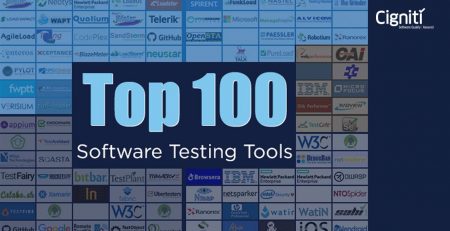Why Choosing Open Source Testing for Your Business Makes Sense?
|
Listen on the go!
|
Open Source Software is no NEWS story for the tech world. Thanks to the much-needed attention over the Internet, Open Source Innovation has been trending and driving the required attention. In the 1980s, a global community of programmers and developers created free software and shared insights to learn and gain from mutual exchange of knowledge on the subject.
During 1970s – 1980s, Open Source moved towards commercialization and volumes got written on the topic. The Open Source Initiative (OSI) came up in 1998 that proved to be an encouraging force. It has been reported that almost 98% of enterprise-level companies are using Open Source to address various software related issues.
Interestingly, government bodies performing critical operations are encouraging the use of Open Source software. For instance, the US Department of Homeland Security relies on Open Source to help detect bugs.
Emerging trends in Open Innovation
But hey, the reasons for increasing adoption of Open Source goes way beyond the mere fact that it is almost free. Businesses are experiencing benefits on all fronts, specifically in terms of ROI. The benefits are being recognized across a wide spectrum of businesses, where software innovation refers to research and development initiatives, involving intellectual capital, physical products, and inventive approaches in software production.
The OSI was brought into picture by Eric Raymond and Bruce Perenes in February 1998 with the objective to provide education and support for the Open Source label and further defined the term. OSI has been a major proponent of Open Source movement. (source: Wikipedia).
In an open development environment, businesses experience competitive advantage and continue to remain aggressive in utilizing resources that are easily accessible for continuous development and product enhancement. There is a growing instability in the marketplace and overall product/service lifecycle. Enterprises are required to remain resilient and adaptable to change, which can actually enable market-readiness.
Referring to the overall Open Source Database Management Systems (OSDBMSs) market, Gartner estimates, “By 2018, more than 70% of new in-house applications will be developed on an OSDBMS, and 50% of existing relational DBMS instances will have been converted or will be in process.”
While some hard-core Analyst reports are yet to emerge for effective statistical focus on the Open Source market, it is quite interesting to witness the overall market trends.
According to Eric Raymond, an acclaimed American software developer and advocate of Open-source software, “Open source software is a big win for businesses, which are saving billions and passing that savings along to customers . . . The open source movement is advancing because of feature-rich, high quality, reliable software with compelling economic benefits.”
This definitely sets the essence of Open Source and its growing acceptance across enterprises and industries.
Is the world telling you to trust Open Source?
Economics, ease of adoption, consistent upgrade, active and vibrant community support, active development, open development platform, and many more of these benefits are being spoken about for Open Source software/tools.
But why trust a tool/software that is under surveillance, and most of the times at the mercy of so many developers and testers? For businesses, the most apparent question is, will it be good enough for enterprise-level applications?
These arguments take a back seat and eventually die, when there are success stories like RedHat to talk about and mega successful social players like Facebook and Google to cite.
Apart from the price tag, it’s the flexibility, scalability, and the ‘people’ factor that changes the entire perspective and sets the right tone for the argument. When top coders come together and solve an issue for a larger audience, things change and the benefits become obvious.
The year 2016 saw a lot of forums and conferences around Open Innovation – The Paris Open Source Summit, Open Source Monitoring Conference in Berlin, Seattle GNU/Linux Conference, and OpenStack Summit in Barcelona are some select few. While these Summits have been happening for few years now, there is a fresh rush of excitement and curiosity seen around Open Source innovation.
Some interesting conferences coming up in 2017 are FOSDEM 2017 – Brussels (Belgium), SCALE 15x – Pasadena (United States), Flink Forward San Francisco 2017 (United States), Berlin Buzzwords 2017 (Germany), and Open Innovation Summit London 2017.
These are just few names, but the point to take back home is – a lot of discussion is happening not just amongst the technical folks, but also amongst enterprises and experts on how to improvise these open platforms and trigger further growth and innovation.
Why use Free and Open Source Software (FOSS)
As mentioned earlier, the benefits of FOSS are more compelling than just the $ aspect.
Accuracy
Open source development involves many developers and a huge community that is constantly upgrading the system. This helps cut down the errors faster and brings accuracy in the overall process. Additionally, it is well-tested and tried for larger applications, leading to more experiential perspectives.
Bugs also tend to get fixed quickly, as there are various ways and processes tried to get the results and solve issues. Successful practices are shared with all for further exploration.
Self-development
Open source software is made with the user in perspective, so it gets very much closer to what they would want and can make. So, it is not associated to a vendor but brings into view what a user and developer would make.
Surveys suggest that Open Source is considered more technically superior and is the primary reason why enterprises are choosing it.
Customized
Another prominent reason for businesses choosing Open Source software is that it can be customized to suit the needs. Open code requires modifications for adding functionality. These modifications lead to learnings, testing, and upgrades.
Accessibility
When Open Source is chosen above licensed testing vendors, it is a business decision to move away from vendor lock-in and packages that are cost-driven. This releases you from the mercy of vendors, requirements, training, dictates, pricing, timetable, and any confining factor that takes you away from easy deployment and changes.
In a way, users/enterprises can take charge and take their own decisions on the software development aspects and decide on various features/functionalities that can be added and tested.
Flexibility
If you are using a propriety software such as Microsoft Windows, you will gather what this benefit has to offer to you. It’s like walking on a treadmill with no freedom to explore in the woods and follow the trail.
Open Source gives that kind of flexibility and helps you add features as required and as per your fancies. Typically, Open source is less resource-intensive, so it can be executed on a legacy system as well. So, you are the decision maker, not the vendor for any change with your product.
Interoperability
When compared to proprietary software, Open Source software complies well with open standards. If interoperability is your objective, across businesses, systems and users then Open Source is an option that doesn’t confine you to proprietary data formats.
While choosing a proprietary tool or licensed product, you may only consider feedback from the vendor. When you decide to go with Open Source, you have an entire bunch of developers and testers to validate the claim that the tool makes.
Support system
Open source tools are normally almost free and so the support is provided by active and vibrant communities for each aspect of software. In order to bring in the aspect of support, these online communities provide required documentation, discussion forums, mailing addresses, newsgroups, wikis, etc. Extra support is offered by some paid options as well at a cost that is way below than what a proprietary tool would offer.
Cost Vs ROI
Licensed tools suck the big bucks out of your pockets with expenses like Virus protection, support changes, upgrades, and so on. Though not the only reason, but a prominent reason why Open Source tools are chosen by enterprises/institutions today.
It not just brings down the costs, but with its added benefits, it gives you a better ROI, and, in fact a higher fragment of returns.
Likewise, Open Source gives you the bandwidth to try out tools and software without any fixed prior commitments.
Working with present-day solutions
At Cigniti, we are very much in tune with the industry trends and when it comes to collaborating with our clients across industries, we work with contemporary solutions. We have been advising clients from various industries on the boons that Open Source can bring for their business.
Cigniti’s Test Automation Center of Excellence (CoE) leverages Selenium as a tool of choice for automating web application testing, for performing functional regression automation, and to develop and maintain automated test suites. Moreover, our 300+ Selenium test automation experts contribute regularly to the growing Selenium open source test automation community.
Connect with us, as we will not let you lag in the innovation cycle by providing the latest solutions for your business needs.





Leave a Reply